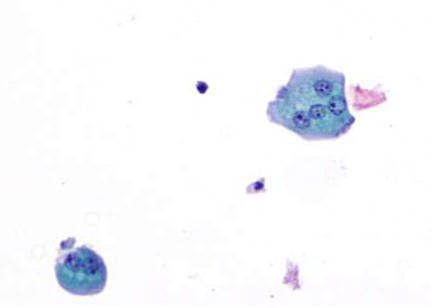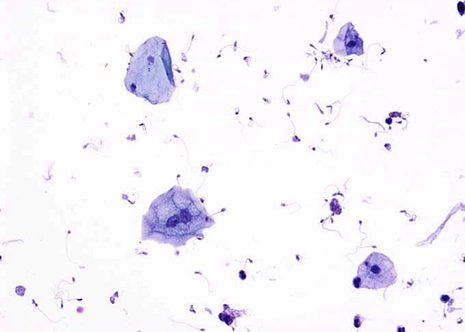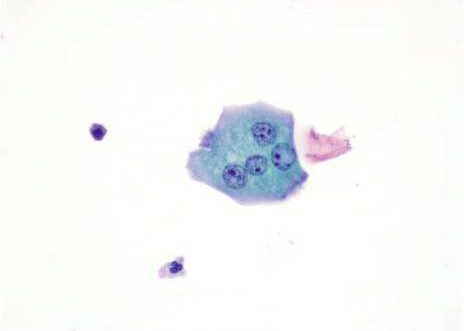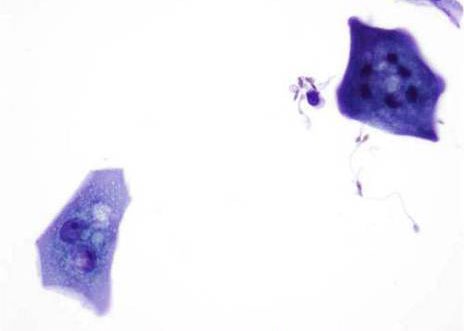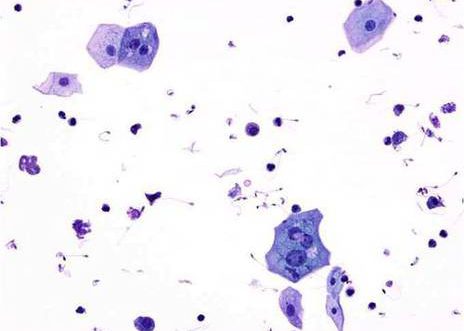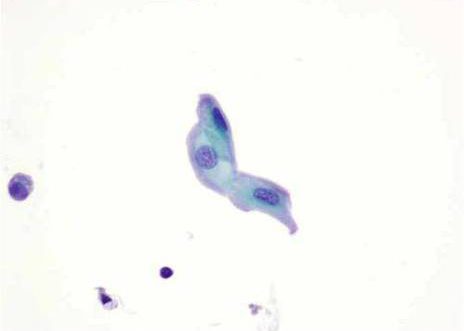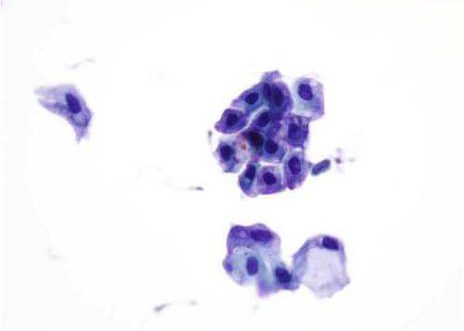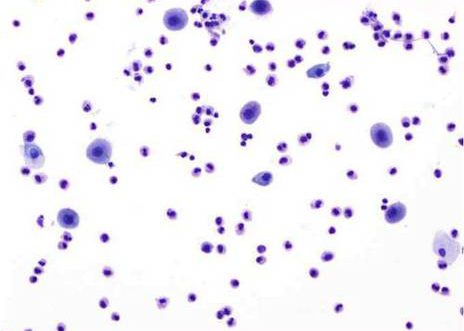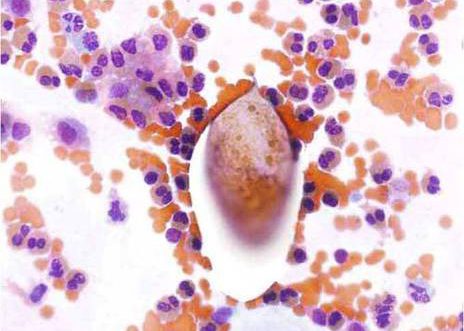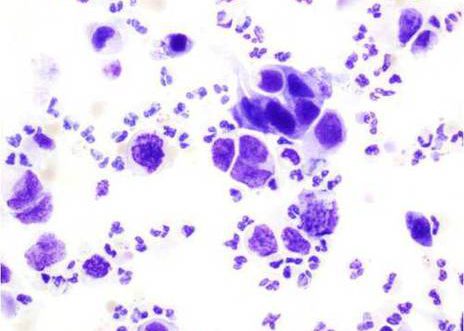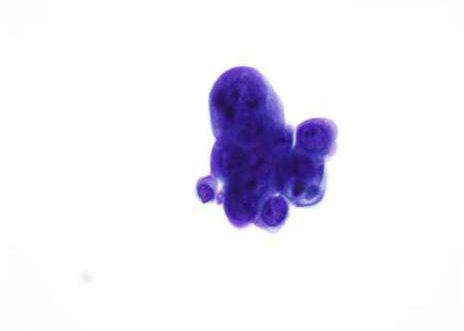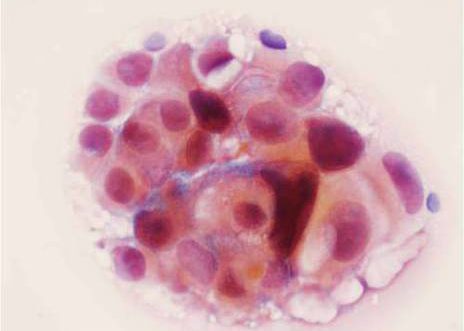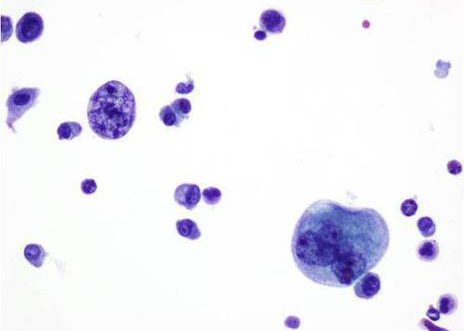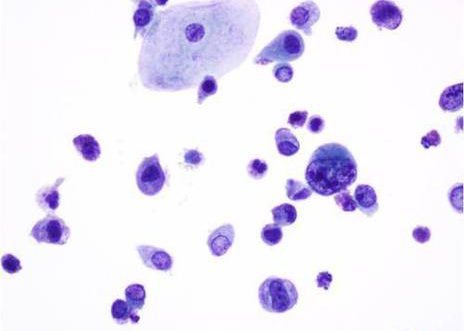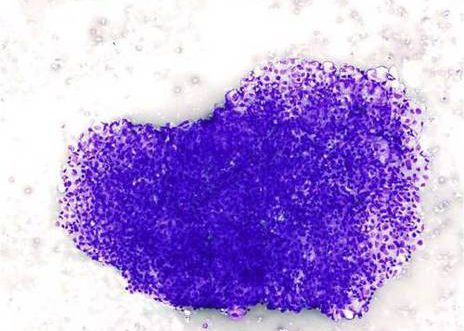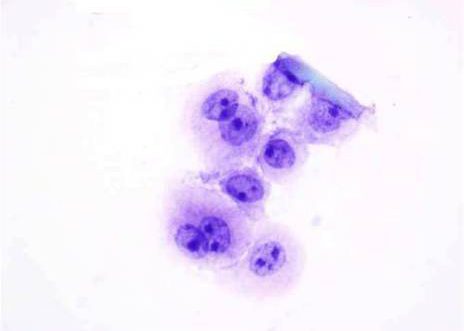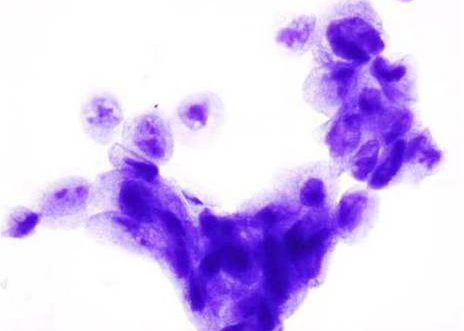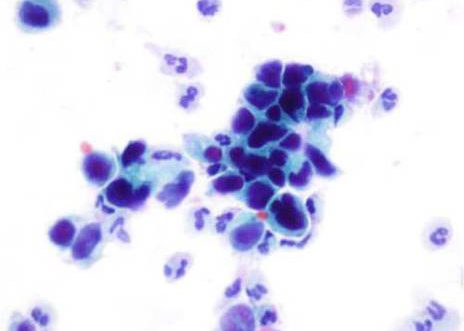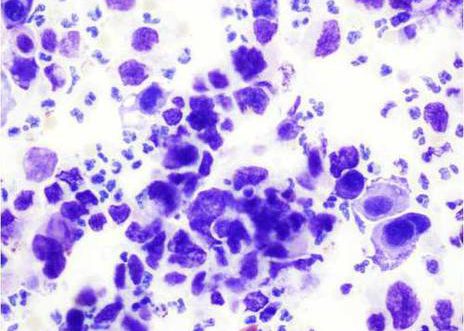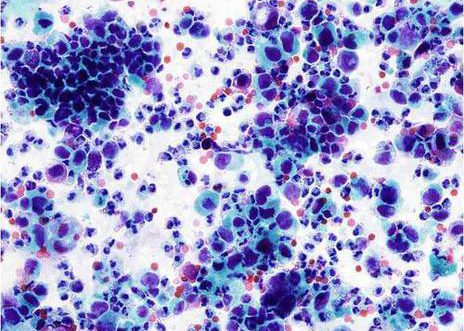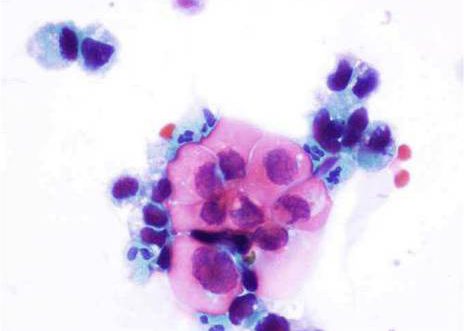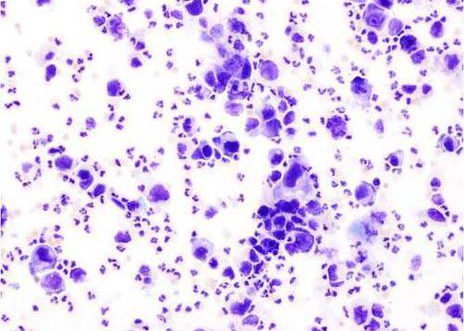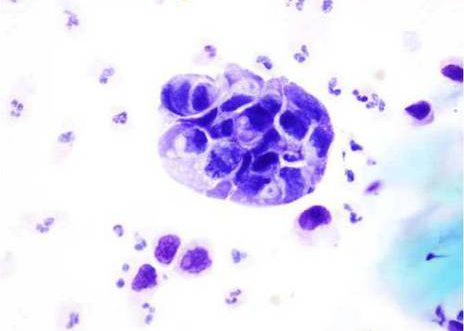Urinary cytology is mostly used for the detection of malignant tumors of the urinary tract. Symptomatic patients, usually hematuria, or those who are at risk for bladder cancer are suitable candidates for morphologic examination of their urine. A urothelial tumor can develop anywhere in the urothelium but the majority of such tumors occur in the bladder. Although 70% of bladder tumors are superficial or only minimally invasive, and theoretically curable, 50-70 % of these patients will have recurrent or new tumors, up to a third of which are of higher grade and/or stage. The patient becomes a lifetime candidate for recurrent or new urothelial lesions. The remaining 30% initially present with muscle invasion or distant metastases.
Even more important than the detection of bladder tumors is the follow-up of patients after treatment ( mainly transurothral resection, instillations of cytostatic solutions, and irradiation). Cytology plays an important role in the management of these patients. A recurrence of tumor will nearly always be seen by exfoliated cells, sometimes even before it seen by cystoscopy.
